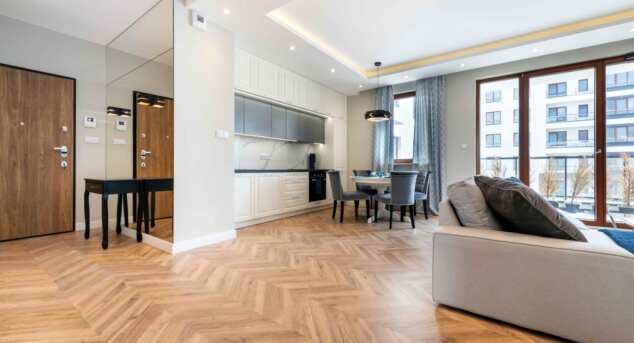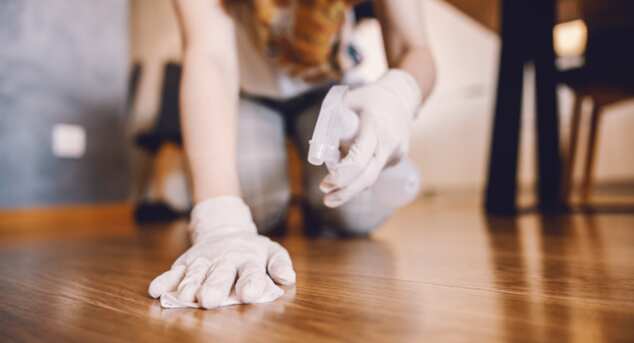What is the Most Durable Hardwood Flooring?
Posted by Aaron Schaalma
When it comes to choosing the perfect wood flooring, several factors are worth considering. Durability is a key aspect, but it's not the only one. The aesthetics, the location of your home, and even the type of wood used all play a vital role in making the right choice. Let’s talk about what makes wood flooring durable, various options to choose from, and how to maintain it for lasting beauty.
The Quest for Durability
Durability is often a primary concern when selecting wood flooring. After all, you want your investment to withstand the test of time, daily wear and tear, and any unforeseen accidents. In the United States, hickory is frequently considered one of the most durable wood options. However, despite its impressive hardness, hickory may not be everyone's first choice due to its distinctive appearance.
Hickory wood has a significant amount of variation in its color and grain. This variation can create a dramatic visual effect, with contrasting light and dark shades. While some homeowners appreciate this characteristic, others find it too busy or rustic for their taste. Additionally, hickory wood tends to have more sapwood, which can be less appealing to those who prefer a cleaner, more uniform appearance.
For those who desire a more consistent and traditional look, oak is a popular alternative. While oak is not as hard as hickory, it still offers decent durability, making it a practical choice for many homes. The choice between hickory and oak illustrates the delicate balance between hardness and aesthetics that homeowners must consider.
Understanding the Janka Hardness Rating
To determine the durability of wood species, one commonly referred to metric is the Janka hardness rating. The Janka test measures the force required to embed a steel ball into the wood's surface. The higher the Janka rating, the harder the wood. It's a helpful guideline for comparing different wood types.
However, it's essential to note that the Janka hardness rating is not a one-size-fits-all solution. It primarily applies to solid wood flooring and may not accurately represent the performance of engineered wood. Engineered wood consists of a layer of hardwood on top of multiple layers of plywood or high-density fiberboard. While engineered wood can be more stable in various environmental conditions, it is more prone to dents and scratches compared to solid wood.
End Grain Flooring is an Exceptional Choice
For those seeking exceptional durability and unique aesthetics, end grain wood flooring is a reliable option. End grain floors are created by slicing wood against the grain, exposing the tree's growth rings. This unique cut provides incredible strength and resilience.
End grain floors can withstand heavy impact, making them ideal for high-traffic areas. You can even take a hammer to them, and they won't dent. These floors are not only durable but also offer a one-of-a-kind appearance. They are available in various designs, such as the classic checkerboard or the rustic cobblestone look.
End grain wood is commonly protected with a hard wax oil finish. This finish not only safeguards the wood's surface but penetrates deep into the grain, saturating it with protective elements. This saturation makes the wood extremely resilient and long-lasting.
Even a traditionally soft wood like pine, when transformed into end grain flooring and treated with hard wax oil, becomes exceptionally durable. It's an excellent option for those who crave the warmth and character of wood flooring but don't want to compromise on durability.
Consider the Location
The location of your home also plays a pivotal role in choosing the right wood flooring. If your house is near water or experiences fluctuations in humidity, hickory may not be the most stable choice. Hickory is more susceptible to moisture-related expansion and contraction, which can lead to warping or buckling.
For homes with varying environmental conditions, it might be more prudent to choose a different type of wood or cut, such as engineered wood or end grain. These options offer enhanced stability and can better withstand the challenges posed by moisture and temperature fluctuations.
Protecting Your Investment
While choosing a durable wood type is crucial, proper maintenance is equally important for ensuring the longevity of your wood flooring. Here are some tips to protect your investment:
Opt for Low Sheen: Low-sheen finishes are an excellent choice if you want to reduce the visibility of footprints, scratches, and dust on your floor.
Proper Sanding: Correctly sanding the floor before finishing can make it more durable, as it ensures a smooth and even surface.
Engineered Wood for Wider Planks: If you prefer wider planks, engineered wood is a practical choice. The added stability of engineered wood can accommodate wider board widths.
End Grain with Hard Wax Oil: For the ultimate in durability, consider end grain flooring treated with hard wax oil. This combination offers both strength and resilience.
Control Moisture: Maintaining consistent humidity levels in your home can help prevent issues like curling and premature wear. Running an air conditioner during the summer and regulating indoor temperatures is essential.
Choose Aesthetics: While durability is crucial, it's equally important to choose a wood type and finish that align with your personal aesthetic preferences.
Periodic Maintenance: Every 3-5 years, it's advisable to refinish your wood floors. This will keep them looking beautiful and protect them from daily wear and tear.
In conclusion, the quest for durable wood flooring involves striking a balance between hardness, aesthetics, and environmental considerations. While hickory is celebrated for its durability, other wood types like oak, engineered wood, and end grain flooring can provide excellent options, each with its unique strengths.
The choice should reflect your personal preferences and your home's specific needs. Remember that, with proper care and maintenance, your wood flooring can serve as a lasting, beautiful, and durable addition to your home.
Ready to transform your home? Book a free consultation with me today.



